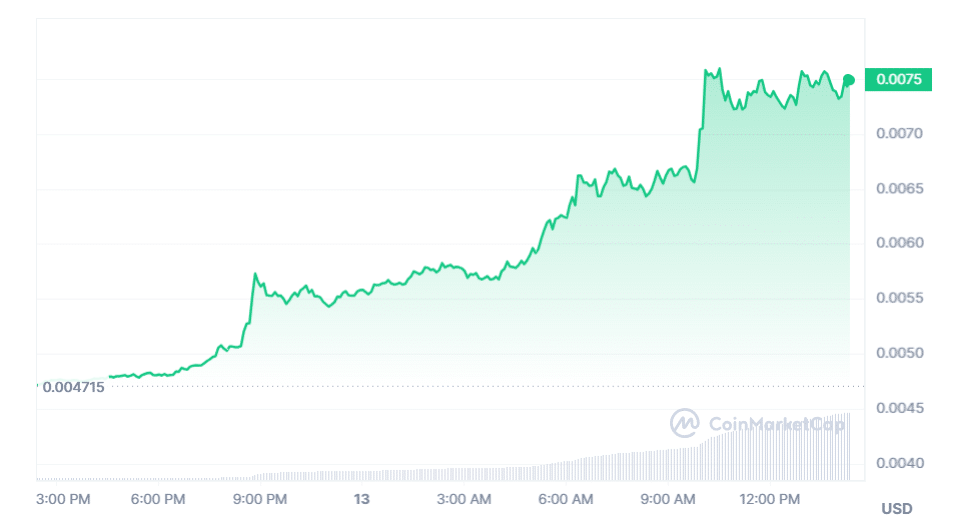Nervos Network's CKB up 56% amid launch of RGB++ client for Bitcoin
The CKB token of Nervos Network has rapidly soared by over 55% shortly after developers released RGB++, an extension protocol base designed to work with Bitcoin.

According to data from CoinMarketCap, Nervos Network‘s CKB has experienced a noticeable surge of over 55% following the release of RGB++, an extension protocol designed to enhance compatibility with Bitcoin. Over the past 24 hours, the trading volume of CKB increased by over 1,800% up to $116.4 million, data shows.
CKB price in USD | Source: CoinMarketCapThis surge propelled the token to levels not seen since 2022. While the exact reason behind the pump remains unclear, the sudden spike coincides with the release of RGB++, an extension protocol built upon RGB (Really Good Bitcoin), which utilizes the Lightning Network sidechain to tackle scalability challenges.
The RGB++ idea which makes use of a Bitcoin L2 as a RGB client is really intriguing. RGB derives from @peterktodd's "Single-Use Seal", uses Bitcoin UTXO as seals and Bitcoin blockchain as a decentralized publication medium. What if we use L2 extended UTXOs (e.g. CKB cells) as… https://t.co/EtwlzrF7hE
— Jan PoW↾⇃ (@busyforking) February 13, 2024According to a forum post, RGB++ addresses issues that were present in the previous iteration of RGB while introducing new functionalities, such as enhanced transaction verification methods. Additionally, the protocol aims to streamline processes like token airdrops.
CELL Studio, a blockchain software development firm focused on Bitcoin and Nervos Network ecosystems, hailed the latest development as an “important step” towards mass adoption and sustainability within the Bitcoin community.
Founded in 2018 by Jan Xie, Kevin Wang, Terry Tai, Daniel Lv, and other industry veterans, Nervos Network is focused on a mission to tackle scalability and interoperability challenges within the blockchain ecosystem. The project is leveraging the CKB token, which appears to be serving multiple purposes such as transaction and storage fees, governance, and incentive programs.

































